It’s been the domestic dwelling of many Members of Parliament, a couple of Prime Ministers and even a former Lord Mayor of Sheffield.
But amidst the aristocratic wealth predominantly associated with the UK’s largest private residence, the rooms within Wentworth Woodhouse were also once the not-so-humble abode of hundreds of young women who attended Lady Mabel College.
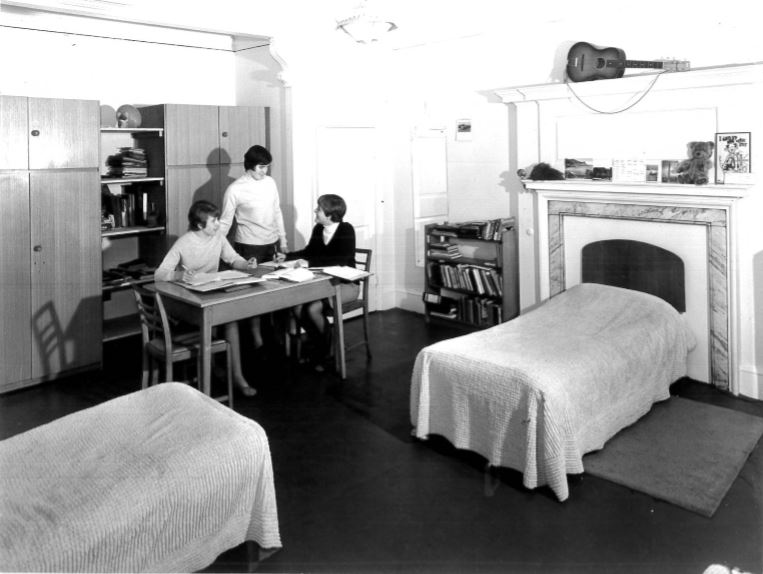
Until recently, Wentworth Woodhouse’s scholastic era has been relatively untold, the memories of which have remained with the many student cohorts from its almost 40-year tenure. But thanks to one alumnus, the academic story is being brought back into the frame with the launch of the new Lady Mabel College tours this September.
Leading visitors through the specialist monthly tours will be house volunteer and former Lady Mabel student, Sue Gravil, who wanted to finally unveil those educational years often elapsed from the history books but which provided principal grounding for so many young women.
As with all tales shrouded in mystery, the red cloaked Lady Mabel story has been somewhat exaggerated over time and Sue’s belief is that it is better to hear what happened from first-hand accounts.
Many people hear the words college and instantly associate the big grey concrete blocks at the top of the drive. But this is just the closing chapter of a story written into the majestic walls of Wentworth Woodhouse.
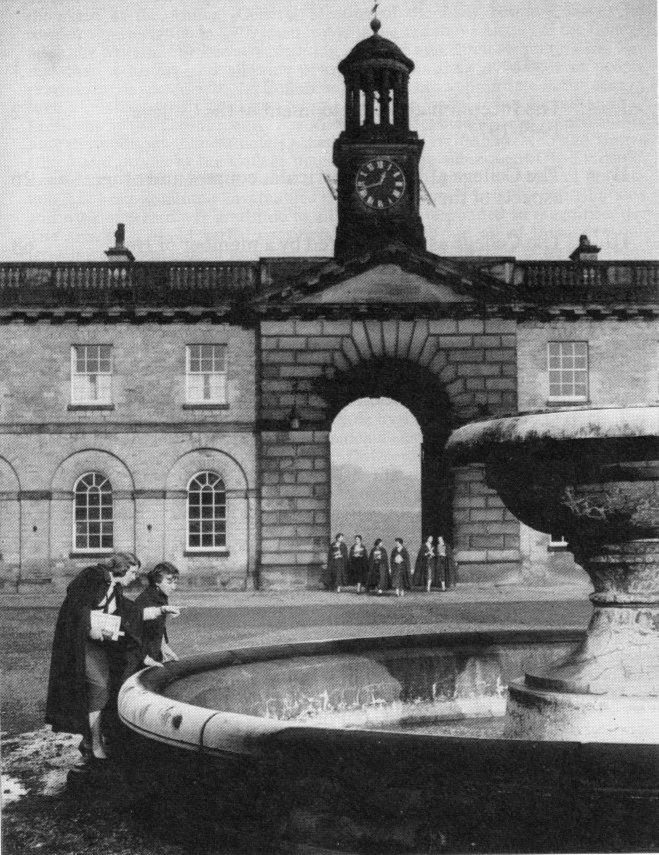
The new tours will focus on which areas of the house students lived, studied and trained and what daily life was like as a Lady Mabel student, pieced together like a complex puzzle from the many differing anecdotes and memories of each new intake of students.
Before members of the public step inside many previously unseen areas of the house during the new tour, we spoke to a handful of the Old Students’ Association members who have helped Sue in collating information for the upcoming tours.
Lady Mabel College of Physical Education officially opened as a training provider for female PE teachers in September 1949 thanks to the generosity of Lady Mabel Fitzwilliam, or Smith, the sister of the 7th Earl Fitzwilliam, William ‘Billy’ Wentworth-Fitzwilliam.
Unlike her brother, one of the richest men in Britain and whose extravagant lifestyle she reportedly deplored, Lady Mabel had a social conscience having seen the living conditions of the estate’s working families while growing up in the contrasting grandeur of the ‘Big House’.
She became a socialist politician and later an alderman who brokered a deal with Sir Alec Clegg of West Riding County Council to lease most of her family’s home for use as an educational facility, leaving 26 rooms for the Fitzwilliams’ apartment.
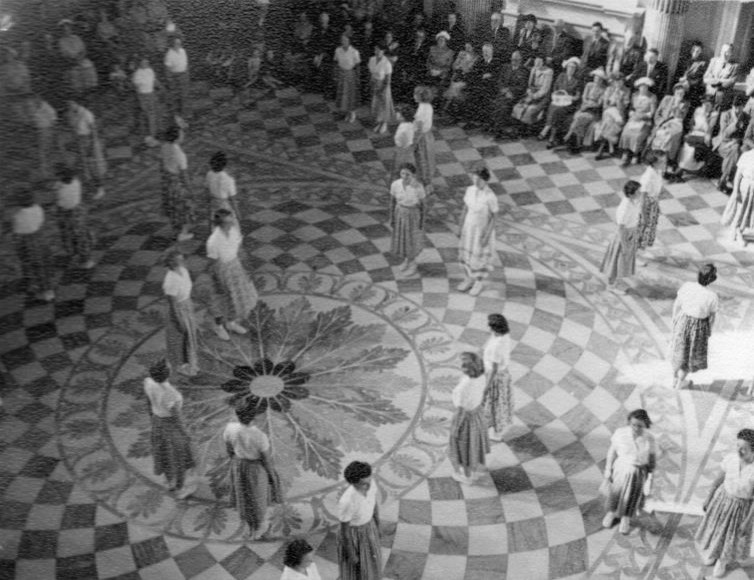
Lady Mabel College became the first of its kind to be council-funded compared to the eight other privately owned PE colleges in Britain at that time. Fees were minimal, if any at all, with training, accommodation and meals ‘on the house’, so to speak. Students mainly just had to pay for their uniforms and any day-to-day living costs but low-income families were entitled to grants to help subsidise this.
“This allowed young women like me, who came from a council estate in Grimsby, to aspire towards being a teacher. I was one of six and my parents were not able to fund such a dream. But thanks to Lady Mabel College, I was the first family member to go onto further education,” Sue says.
And how fortunate the students were to call the magnificent Wentworth Woodhouse their new home for the next three years. No other PE college had such a unique and stately building.
Sue says that when her mum pulled up to drop her off for her first term in 1967, she was sure they’d arrived at the wrong place.
“She just kept saying, ‘Susan, we’ve gone wrong here. This can’t possibly be it.’ But, of course, it was. All I could think was, wow – look at the size of this place, how will I survive in such grace. I remember the first dinner, the table was laid with all this cutlery when we usually just had a knife and fork at home.”
It’s hard not to be overwhelmed by the sheer spectacle that is Wentworth Woodhouse’s great façade. But imagine being an 18-year-old woman living away from home for the first time in such breath-taking surroundings.
The college welcomed students from all walks of life, but none had come from such affluent backgrounds where this standard of house was deemed ‘ordinary’.
However, before the first 40 scholars could move in, the house required many alterations to make it habitable. A few years previous, it had been used by the intelligence corps during the war and was in a bit of a sorry state.
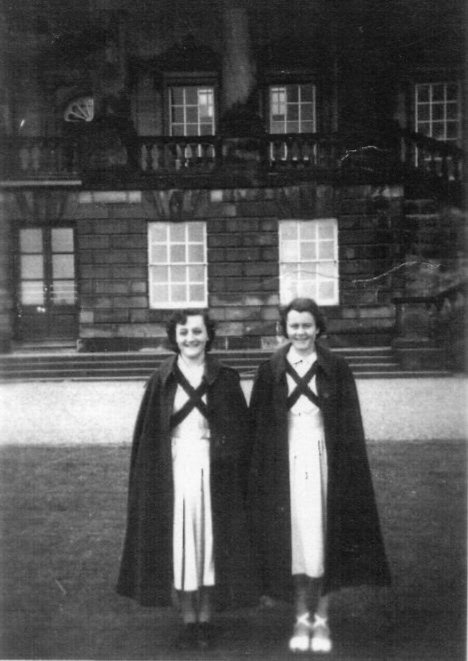
The original intake spent their first term at Harrogate, living at the Valley Gardens Hotel, training in the evenings at the local ladies’ college, and spending their free time indulging in tea and cake at Betty’s.
Once works at Wentworth Woodhouse had been completed, they were finally able to move in in January 1950 and the first student to step through the door was Sybil Wilbraham, or Mason as she was then.
“It was also my 19th birthday that day, January 17th, and it became the college’s birthday which we celebrated every year. In my final year when I turned 21 and the college turned two, my father paid for a party there which was a spectacular event,” Sybil, now 88, says.
Over its time as a training college, the vast amount of rooms at Wentworth Woodhouse changed uses from ceremonial dining rooms to dance studios. The first accommodation blocks were in the South Wing, nicknamed Bedlam, where up to four students would share a room with a bathroom and ‘tilley’ or small kitchen utility area.
As numbers grew, more areas of the East Front were used until, in 1959, the Earl agreed to let out Hoober House and a college bus was provided for those commuting to and from lectures. There was also accommodation in the stable block.
Chris Ireland, who was a student there from 1964, was one of the students who chose to live at Hoober House in her second year before returning to the North Wing for her final year
“There were 60 ladies who started the course at the same time as me and many had not lived in a communal setting before. I was from Surrey which was very different to South Yorkshire – particularly understanding the northern language! You had to get on with one another but we all quickly gelled without much arguing. The friendships we made have stood the test of time and even after 50 years these remain steadfast,” Chris says.
None more so than Sheila Sherwood who also started in 1964 and whose two roommates were her bridesmaids who she still sees regularly. For Sheila, it is this close-knit community which drew her to Lady Mabel over other colleges like the one in Eastbourne where the accommodation was scattered away from campus. Plus, she grew up in Sheffield so the journey back home wouldn’t be that laborious.
Other students applied purely for the standard of teaching on offer for which Lady Mabel was a forerunner in contemporary techniques.
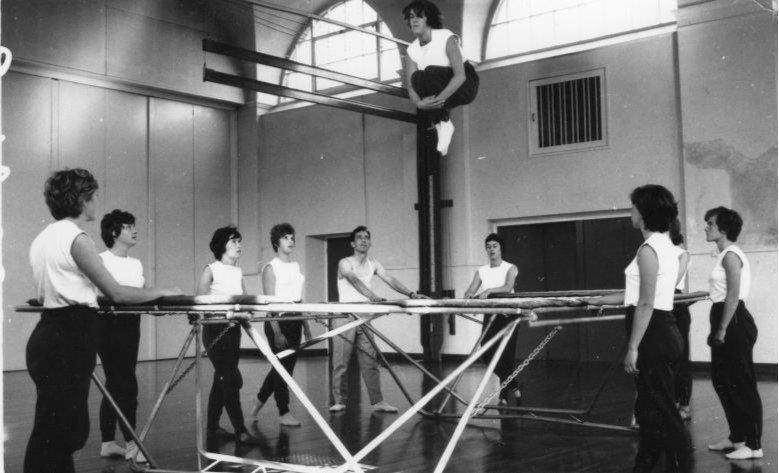
Sybil, like many others who would go on to attend Lady Mabel College, had always wanted to teach, particularly PE and sport, and had applied to the six other specialist PE colleges without success.
“I was called for interview at several which were pretty gruesome and intensive weekend trips away. At the end of each one, the principal said ‘Miss Mason, we’d very much like to accept you on our course but we simply can’t due to your lack of height.’ I am five feet and half an inch which didn’t reach their cut-off point back then but this disgusted me as they had my vital statistics in my application so why offer me an interview?”
That was the end of her PE dreams in Sybil’s eyes and instead she considered applying for university to study zoology and botany to become a science teacher.
Then Lady Mabel College came on the scene and changed her life.
Their new model of teacher training focussed on Physical Education compared to the preceding Physical Training which had been used in schools for years.
“Before, in PT, school pupils were made to go over a box or horse and the teacher would have to catch them or drag them over if they couldn’t do it. Because of my height, it didn’t look as if I could although I knew my own capabilities. The new style of PE meant students could now experiment with apparatus and do their own thing,” Sybil says.
Lady Mabel College was the first to introduce this new theory in gymnastics along with the Laban Principles of Movement in dance which concentrated on quality of movement and how the body could use shape and space effectively.
Rather than a rigid style of teaching where every student was expected to perform to a certain standard, teachers now had to be brimming with ideas and encourage pupils to draw out attributes to match their individual abilities.
“As the first 40 students, we were the pioneers – or guinea pigs – and so we considered it a great privilege and responsibility. We had fantastic backing from the tutors and we gave them tremendous respect. Our relationship was perhaps very different to subsequent years; staff were more stringent in ways as we were the initial result of their innovative concept. But our teachers were also learning so we embarked on this new journey together,” Sybil says.
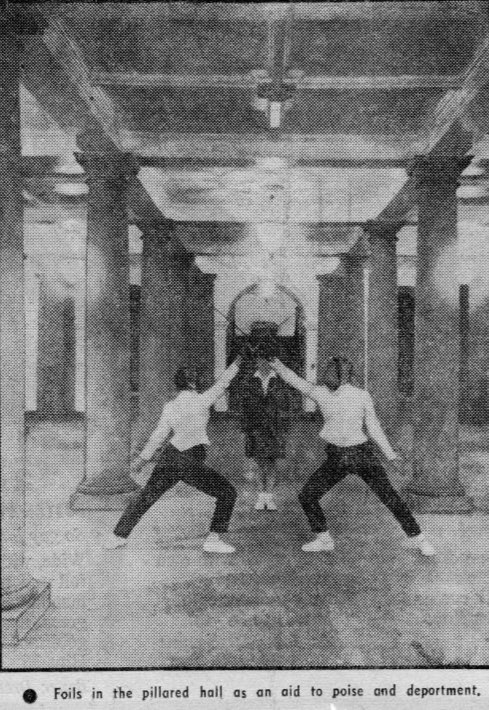
It would have been a culture shock for most Lady Mabel students as they had been brought up on the old physical training style. However, when the Sybils of the world went out to teach after graduation, they inspired a whole new generation of would-be teachers who were intrigued by the modern way.
“It was a challenge because schools had only ever known Physical Training and you would be a junior PE teacher to someone who was so entrenched in the old methods,” Sybil says.
Sue was taught by two former Lady Mabel students at her school in Grimbsy, as too was her fellow 1967 classmate Gwyn Elliott who grew up in Hartlepool.
In Gwyn’s first year at secondary school during the baby boom of the early 60s, there was a shortage of PE teachers and she was taught by one hockey coach and one teacher who went on to leave to get married. By her third year, the school had employed two newly qualified teachers from Lady Mabel College with another quickly following.
“I loved how they taught; it was so modern. They concentrated on quality of movement rather than sporting ability. It didn’t matter if you couldn’t do a back handspring,” Gwyn says.
With an aptitude for hockey, athletics and largely swimming – having a place in the North East Schools’ team – Gwyn was encouraged by her teachers to apply for Lady Mabel. As too was Sue who was also a good all-rounder at school and was accepted at her first-choice college of Lady Mabel.
Along with the gratuitous training and accommodation, Lady Mabel College also differed from its competitors by its admissions procedure which meant that so long as a student had gained five O-Levels, one of which needed to be English Language, they could apply for a place.
“They didn’t just choose those who were the best at sport or the most academic. As they say, there is no ‘I’ in team and the year groups were all level playing fields,” Sue says.
Sybil reiterates this by saying: “At school, I was into everything from drama and the choir to many, sports clubs and even House Captain; I pretty much lived at school. There were plenty of other girls like me who may have been ‘Top Dog’ at school but we all ended up back at rock bottom and had to work hard to stand out or be noticed.”
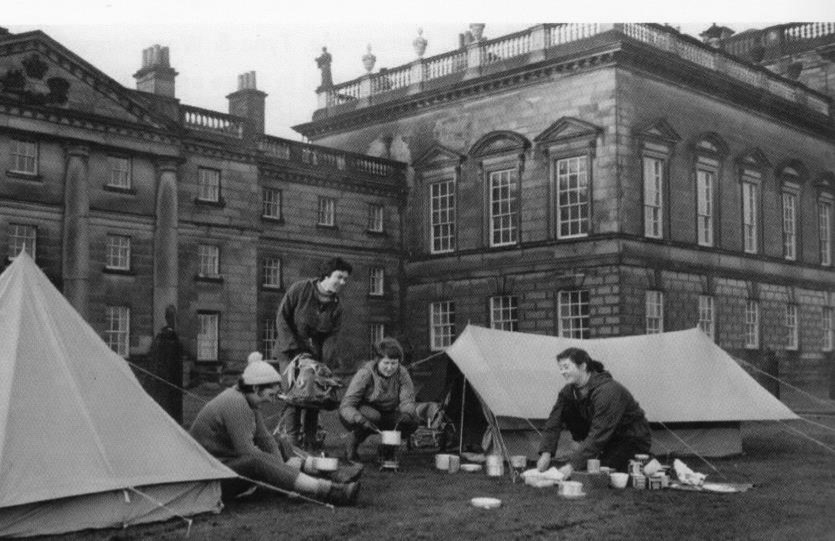
Of course, there were students who excelled in sports, such as Sheila who won silver in long jump at the 1968 Summer Olympics in Mexico just one year after graduating. Four years earlier when she had just settled into life at Lady Mabel, Sheila was called up to the Tokyo Olympics. Here, she also went on to meet her future husband and fellow medal-winning athlete, John Sherwood at a blind double date accompanied by fellow South Yorkshire sports star, Dorothy Hyman.
For Sheila, becoming a PE teacher was the obvious route to follow having grown up surrounded by sport thanks to having two older brothers in the post-war era of no TV. Her childhood revolved around football, cricket or finding ways to entertain herself outdoors.
She accidently fell into becoming a long jumper after years as a kid spent practicing how many paving slabs she could jump over when her friends had gone home for their tea. With a long body and short legs, Sheila says she’s not naturally made for it but was spotted by her school PE teacher after jumping over 15 feet at a first attempt – the national schools’ standard.
While at college, her athletics training took a back seat due to the highly involved curriculum that covered a broad spectrum of sports played across many areas of the house and estate.
“The training was unbelievably thorough. Our days would start with a compulsory breakfast due to the physicalness of the course, with meals and refreshments provided through the day to keep our energy levels up for back-to-back lectures. But it was fantastic and I wish the principal was still here to tell her how grateful I am,” Sheila says.
Facilities were limited in the early days but the extensive grounds made for excellent sports pitches, with cricket played on the front lawn, lacrosse by the deer sheds and even canoeing on the lakes. The stable block had a large gymnasium which was also used for hockey, badminton and netball.
There wasn’t a pool on site until the early ‘70s so swimming lessons took place at Chapeltown Leisure Centre or Wath Baths where the students would regularly arrive to the caretaker’s ginger cat doing the kitty paddle in the pool before it was their turn to do Eskimo rolls in their kayaks.

Dance was taught in the Whistlejacket room with the famous racehorse’s original portrait glaring down, or larger groups did ballroom dancing in the marble saloon where Sheila re-enacted the waltz with her friend when the house reopened a few years ago- albeit without the college’s old dirdl skirts.
As an all-female college, activities like ballroom dancing could be embarrassing for the young women, as Chris remembers.
“Obviously, some of us would have to play the male role and ballroom required hip contact which nobody wanted to do. Our tutor made us hold a sheet of newspaper between us – but they didn’t stipulate where. We’d hold it in our teeth to avoid hip contact.”
School placements were also part of the course and the students had many observation periods each year based around seasonal games and activities.
Although students were taught how to teach PE, mainly for secondary schools, they also learnt about a child’s physical and emotional development from birth to 18 which prepared many for motherhood and raising families.
Studies also included a subsidiary subject from English literature, music, biology, arts and crafts, or drama, which some, such as Gwyn, went on to teach alongside PE.
Teaching didn’t just end when lessons did; students were always learning during their time spent at Wentworth Woodhouse.
“We learnt how to be caring and compassionate which you need for teaching, especially if you work in deprived areas. When I was working, I’d often launder PE kits for students or provide kids with trainers if their parents couldn’t afford them,” Sue says.
Before women got the vote at 18 in the early ‘70s, the college was classed as in loco parentis, meaning staff had parental responsibility over students. This meant that anyone wishing to leave campus had to apply and were only allowed three per term. Students had strict curfews and had to sign in and out at the front door.
Sue remembers being on door duty one night in her third year when the bell rang at 10pm and an American gentleman asked for the directions to the golf course.
“I told him to go back towards the motorway and drive 150 miles south. He was a long way from Surrey but this was decades before Sat Navs.”
Surrounded by art, culture and history, the faculty’s fascinating setting also had a lasting impact on many of its former students’ lives. They danced in the same marble saloon where Anna Pavlova danced for King George V in 1912, others studied in the library where aristocrats had studied before them. Wentworth Woodhouse instilled a sense of belief and hope that nothing should hold you back, most definitely not your roots.
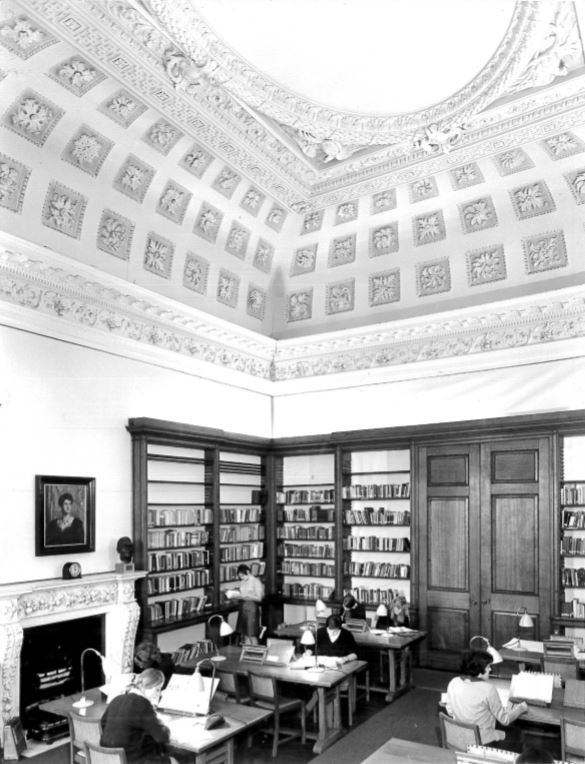
After qualifying, most students went on to teach, taking posts across the country in varying types of schools. Many past students also kept up their sporting hobbies and interests.
As the first cohort to qualify, Sybil says she was literally thrown out of Wentworth Woodhouse by the remaining younger year groups.
“Of course, it was all safe and rehearsed onto gym mats but they threw us onto the front steps – a tradition I’m not sure they ever continued.”
She went on to teach for many years at a girls’ grammar school and continued to play netball and cricket for the midlands before taking early retirement in her 40s with her husband.
“It was the wrong decision for me and I lasted 12 months before I began leisure work. I’ve taught everyone from toddlers to pensioners in swimming, trampolining and gymnastics but primarily ladies keep fit classes since 1980.”
Now approaching her 90s, Sybil still runs two popular classes a week in Macclesfield, where most, if not all, of the members are younger than her.
Sybil was also a founder member of the Old Students’ Association and has held every post on the committee except secretary; she was the group’s long-serving treasurer for over 60 years.
Chris now lives on Alderney but spent many years teaching in Croydon where she also became a lacrosse selector for Surrey schools – a sport she learnt at college. She and her husband then moved to Scotland where she was asked to be Vice President for Scottish Lacrosse. Since moving to Alderney over 20 years ago, where the main mode of transport is by boat, Chris has also become a boating skipper and now teaches navigation at her local sailing club.

Aside from her Olympic feat, Sheila and her husband John were awarded an MBE for services to sport in 1975.
at Wentworth Woodhouse
“When we got the letter through, I said what have we done? The only service we’ve done is to ourselves. John and I wanted to give back and put this MBE to good use so we help organise tennis tournaments in Sheffield.”
Sheila also went on to teach a certain Dame Julie Kenny, current chair of Wentworth Woodhouse Preservation Trust, when she was a student at Myers Grove School.
Although originally from up north, Gwyn stayed in South Yorkshire after college and taught at two schools in Doncaster. When her own children took their swimming lessons, Gwyn, a former butterflier, offered to help teach where chance saw her come across former college mate Sue 20 years after qualifying.
Like Sue, Gwyn has since gone on to volunteer at the house and is currently one of the guides on the new rooftop tours who will also be helping Sue with the college tours. She is also the current Vice President of the Old Students’ Association and is excited to be holding their annual AGM at Wentworth Woodhouse for the first time next year.
For Sue, she liked the peace and solitude village life gave and has never returned to the ‘rat race’ urban lifestyle from which she came. She spent 38 years in teaching until she says she was too old to inspire! Her sporting prowess continued, playing badminton, tennis, volleyball and basketball at club level as well as netball and athletics at county and regional stages.
Once marriage and children commandeered her time, she became a coach and umpire for more elite performers.
As for Lady Mabel, its face as a training institute changed somewhat towards the latter end of its life.
In the early ‘70s, amidst a government reorganisation, the Ministry of Education wanted the Wentworth site to provide 650 places and open the college up to other subjects such as Geography and Environmental Studies.
The new single-occupancy concrete accommodation blocks were built at the top of the drive along with additional lecture rooms, open teaching areas and a pool.
By 1977, the college had amalgamated with Sheffield City Polytechnic and would later become part of Sheffield Hallam University. It still specialised in PE-related degrees, with the main change being men were now able to apply to study there.
The Wentworth campus finally closed in the summer of 1986.
Having volunteered at the house since 2012, Sue Gravil is proud to finally introduce a Lady Mabel College tour which will take place once a month.
Upcoming dates:
Saturday 14th September, Thursday 17th October, Friday 8th November, Thursday 1th December
All dates start at 11am and cost £25 per person with 50 percent discount for National Trust members.
To book your place, visit www.wentworthwoodhouse.org.uk






